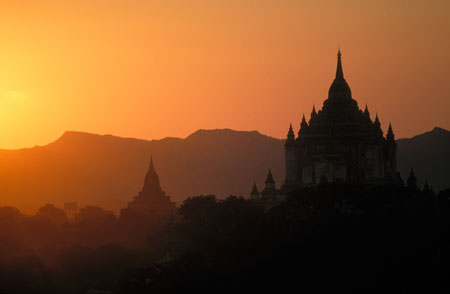An architectural photographer must always remain sensitive to the direction of the light and how it is falling on a subject. As the Sun moves relative to a structure or building, contrast, shadows, reflections and textures all change in particular ways.
Buildings are three-dimensional structures and the best images are created to reveal something of their form and depth. A three-quarters angle of view is generally more rewarding than a straight view of a facade because it gives the viewer a greater understanding of the form of a structure. Shadows incorporated in views of this type help to reveal depth, but contrast must be controlled if detail is not to be lost. Take a few exposure measurments using spot-metering and find a suitable compromise setting. Alternatively, bracket a few shots of the lit, mid-tone and shadow areas and use high-dynamic-range (HDR) techniques to merge them at a later stage.
 Softer and warmer light is found early or late in the day, and can be used to produce lower-contrast images with good colour saturation. Don't necessarily await good weather with clear skies, because clouds can add a great deal to architectural images. Indeed, poor or stormy weather may be appropriate for some images. Dark grey clouds looming behind a sun-lit building add drama to an image, and the presence of people hurrying through rain under thier umbrellas can add further interest. Good shots can also be created in snowy and foggy conditions.
Softer and warmer light is found early or late in the day, and can be used to produce lower-contrast images with good colour saturation. Don't necessarily await good weather with clear skies, because clouds can add a great deal to architectural images. Indeed, poor or stormy weather may be appropriate for some images. Dark grey clouds looming behind a sun-lit building add drama to an image, and the presence of people hurrying through rain under thier umbrellas can add further interest. Good shots can also be created in snowy and foggy conditions.
Although the approach is not used too often, it is also worth shooting buildings and structures as silhouettes at sunset. Find a location which reveals an interesting shape for the building and blocks direct sunlight from the camera. Set the exposure for the sky and try to avoid bright foregrounds.






